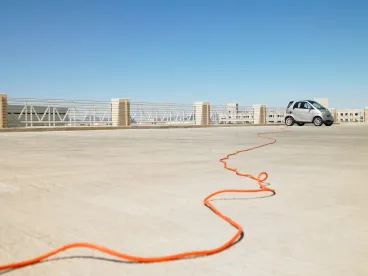The Center for Automotive Research held its 50th anniversary Management Briefing Seminars event last week in Traverse City, Michigan. The theme of the conference was “Competition Rules!” and featured an in-depth look at the global automotive industry, including current competitive trends. Kudos to CAR for another fantastic MBS, despite the curveballs that Mother Nature and her straight-line winds threw at the Traverse City area.
One particular topic of interest to me was the Wednesday session called “Global Strategies: The Maturing of China’s Auto Market” as I have been observing the Chinese auto market for more than a dozen years. Over that period, the Chinese auto market has more than tripled according to Margaret Baxter of the Original Equipment Supplier Association (the principal auto supplier trade group in the U.S.), overtaking the U.S. as the largest market in 2009 and not looking back since. At the conference though, we heard evidence of a flat/challenging market in China and some explanations for that environment which are laid out below.
Falling Car Sales
The first speaker was Dr. Qiang Hong, Senior Research Scientist from CAR, who is a long-time student of the China market. Dr. Hong noted that for the first time in recent memory, car sales actually fell in China for the first six months of 2015. This follows a year in which car sales in China rose about 10%, a modest year by Chinese standards, with domestic Chinese brands capturing 30% of the market. At the same time, Dr. Hong noted that 90% of U.S. auto supplier companies surveyed by CAR before the MBS are either “optimistic” or “somewhat optimistic” about the China market, reinforcing a belief that while the short-term trends are down, long-term growth will resume in China and it will continue to be an attractive and leading automotive market. Dr. Hong also cited the survey participants’ identification of the biggest challenges in doing business in China, led by 73% responding intellectual property right protection – with government regulations, talent recruitment and retention, competition with Chinese companies and industry espionage all garnering at least a 50% response rate. Dr. Hong ended with a review of outbound Chinese FDI in the automotive and other sectors in the U.S. and rest of world.
Market Prediction
Ms. Yao Lu, Senior Business Analyst at the State Information Center in China, echoed many of the observations of Dr. Hong. She noted that while the average growth rate during 2000-2010 of the China PV market was 24%, this rate dipped to 7% from 2011-2014. (Not exactly a swoon by most world standards, but a big drop-off for China.) Sales growth for the first six months of 2015 was less than 1% (with profits actually falling about 1%). She attributed the 2015 flatness to the general economic slowdown in China, purchase restrictions placed by many Chinese cities on automobiles, and the recent stock market drops which have dampened purchasing power. Most of the slow growth rate was attributable to the large “Tier 1” cities being down almost 2%, while the Tier 2 and Tier 3 cities actually showed YTD growth rates ahead of 2014. Much of the growth that is occurring is in the SUV market, she noted, fueled by a huge increase in production of domestic Chinese SUV brands in 2015 (with consumers substituting purchases away from JV brands). Finally, perhaps with some optimism, Mr. Lu predicted a “U shape” market for all of 2015 with sales rebounding to a 3% increase in Q3 and a 6.7% increase in Q4, for an overall projected increase in the passenger vehicle market of 5.1% in 2015 (with a total market increase, including trucks, of 2.5%). On a longer term basis from 2009-2024, Ms. Lu predicted average growth of 13-15%. Overly optimistic? Time will tell.
New Energy Vehicle Growth
Finally, the session ended with a presentation by Yonghe Huang, Chief Engineer of the Auto Technical Information Institute and Director of the China Automotive Policy Research Center, on the “China New Energy Vehicle Market Analysis.” He began by noting that in China “New Energy Vehicles” (NEVs) are defined to include battery electric vehicles (EVs), plug-in hybrid electric vehicles (PHEVs) and fuel cell electric vehicles, but do not include traditional hybrids. As defined, China saw sales of 84,700 NEVs in 2014, a 425% increase over 2013, and so far YTD in 2015 already 83,700 NEVs have been sold. The 2015 mix includes 67% battery EVs, 32% PHEVs and a de minimis number of fuel cell vehicles (10). Mr. Huang then reviewed a dizzying array of government subsidies and tax abatements that are helping to fuel this NEV growth.
Key Takeaways
The session ended with presentations by Daniel Green, Director of the Trade Facilitation Office at the U.S. Embassy in Beijing, and presentations by Laurent Bresson of Nexteer Automotive and David Wang of Yangfeng Automotive Interiors, followed by an interesting Q&A session well moderated by Margaret Baxter.
My biggest takeaway from the presentations, in all, is that we may be starting to see the “maturation” (although not the end of growth by any means) of the China auto market. And at 24 million units, it has matured rather nicely by any standard! We will wait and see whether the somewhat rosy predictions for the remainder of 2015 come to pass, or whether the rest of the year continues to see the challenges that the first half brought to China.




 />i
/>i

